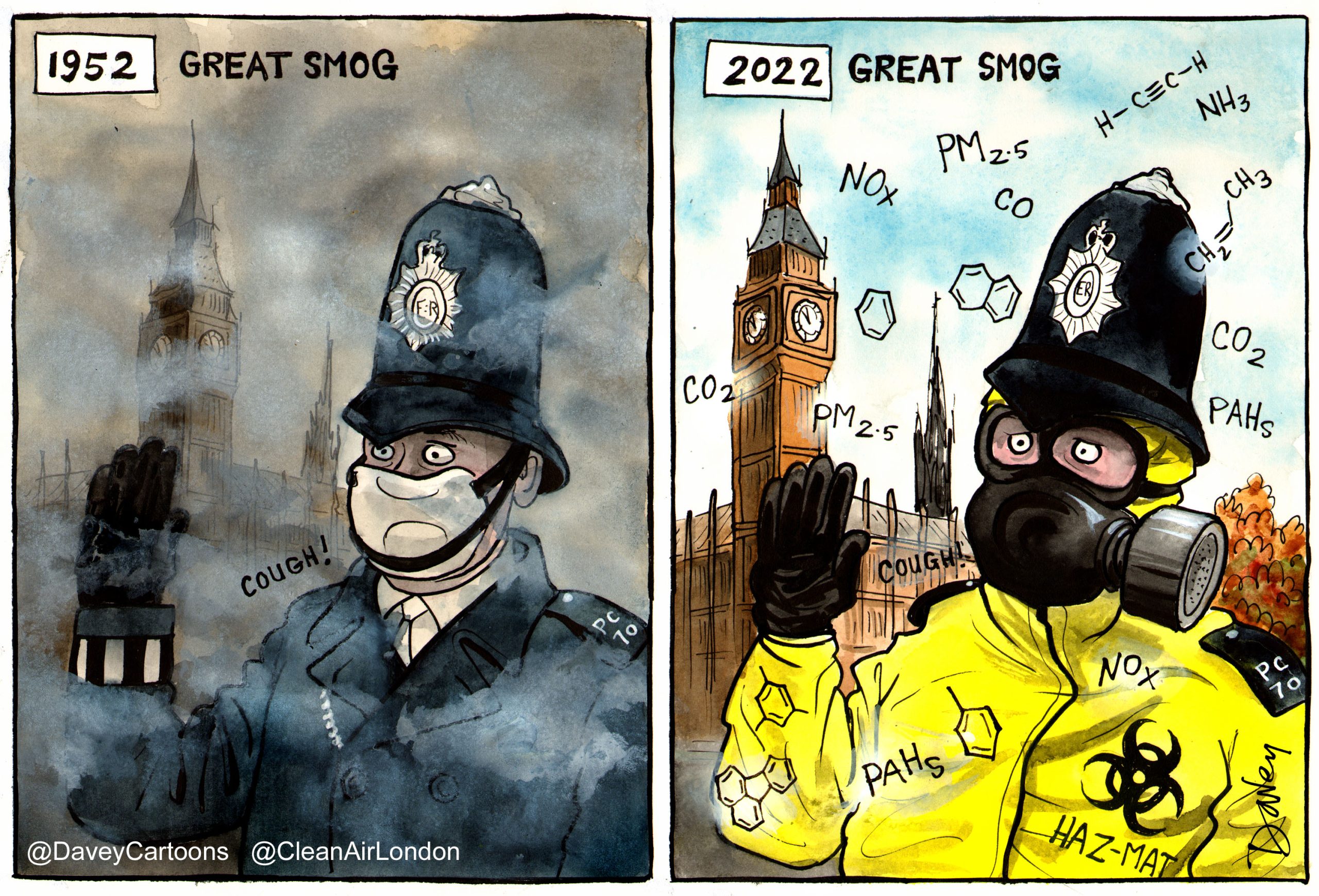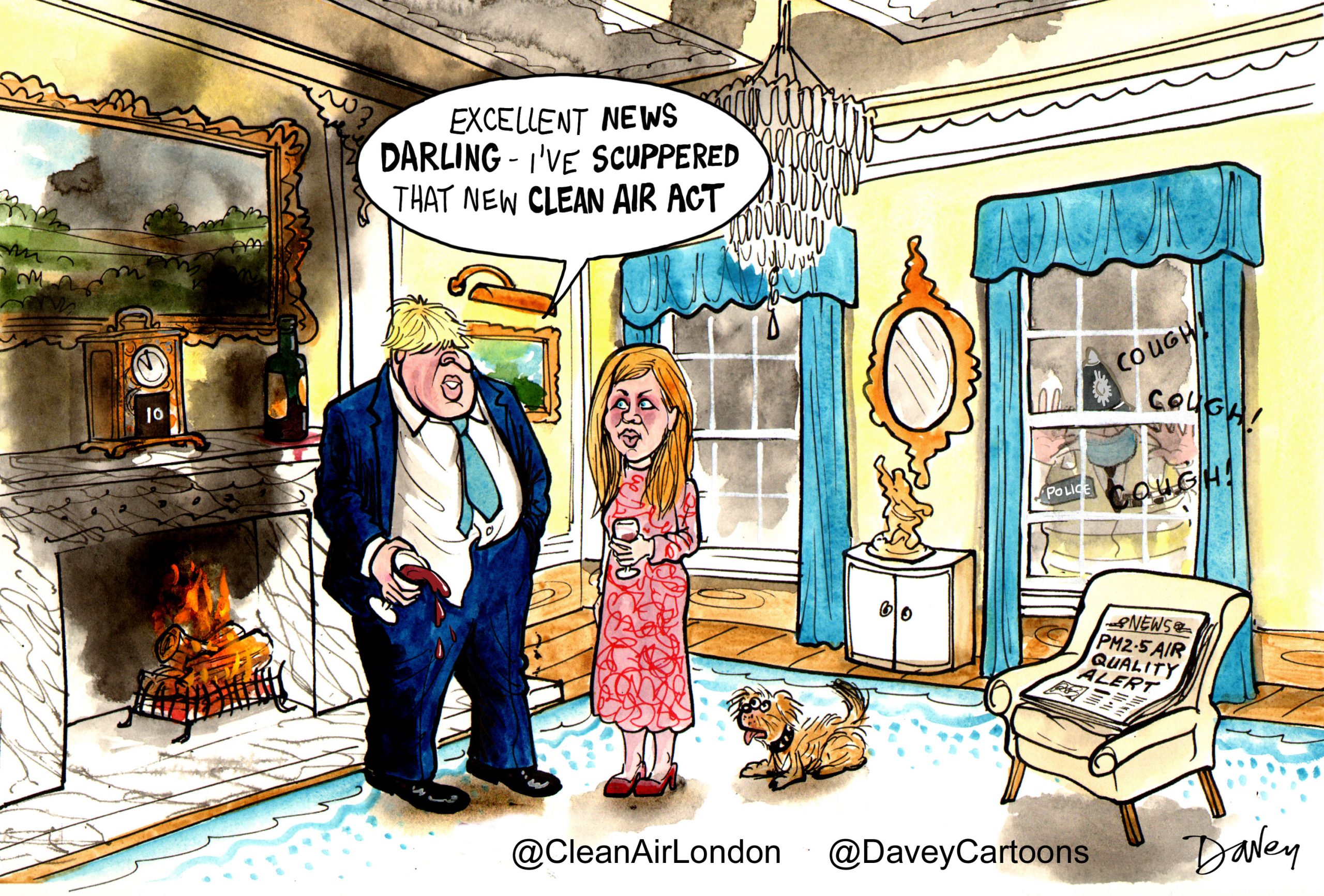Government maps show action is needed urgently if the United Kingdom is to avoid breaching health based air quality laws for nitrogen dioxide (NO2), a toxic gas, in London in each year from 2010 to 2015 (and beyond)
United Kingdom tops the league for toxic traffic fumes in Europe with: the highest proportion of zones breaching the annual average limit value plus margin of tolerance for NO2; and the most polluted capital city
Government maps obtained by the Campaign for Clean Air in London (CCAL), under the Freedom of Information Act, show that the government expects currently the United Kingdom (UK) to breach health based air quality laws for nitrogen dioxide (NO2), a toxic gas, in London in 2010. These breaches are expected to continue each year thereafter up to, including and beyond 2015. These maps are attached to this Campaign update.
CAL 054 Defra NO2 maps for London in 2010 and 2015
Simon Birkett, Principal Contact of CCAL, said:
“The United Kingdom (UK) is already on the receiving end of legal action from the European Commission (the Commission) for breaching legal standards for dangerous airborne particles (PM10) and missing the deadline to apply for a time extension to comply with them. This legal action must be broadened and escalated rapidly unless the UK comes up with a convincing plan to justify a time extension. ‘No time extension’ will be better than ‘a time extension with a weak plan’ because the former would, at least, leave the UK wide open to legal action to force the government to produce finally a credible plan to protect public health.
“The UK’s failure to tackle nitrogen dioxide (NO2), a toxic gas and an indicator of even worse pollutants, dwarfs its failures with dangerous airborne particles. For example, London has the worst annual average level of NO2 of any capital city in western – or eastern – Europe. In Brompton Road and Marylebone Road, current levels of NO2 exceed 95 micrograms per cubic metre (μg/m3) (i.e. over twice the World Health Organisation backed legal standard of 40 μg/m3 from January 2010). Over 100 UK cities breached in 2008 the level that will become the legal standard in 10 months time.
“It is astonishing that the government intends to spend the next 18 months to two years debating plans and programmes to include in a time extension application for NO2 – when it admits it already expects the UK to fail to meet at least one of the three requirements for such a time extension in London from January 2010 (i.e. Article 22(3) of the Directive on ambient air quality and cleaner air for Europe).
“Why is the government not working out now how the UK will become compliant with air quality laws for NO2 as quickly as possible after 1 January 2010? Legal compliance will require three things: the UK proving it has genuinely tried to achieve compliance by January 2010; a convincing plan to comply fully with limit values for NO2 by January 2015; and determined action to ensure average annual levels of NO2 stay below 60 μg/m3 (i.e. the limit value plus margin of tolerance) from January 2010. None of these is currently likely. In stark contrast, Germany, for example, is working hard to have inner low emission zones in place in some 40 cities by the end of 2009 to help it comply with the same health standards.
London needs: the Prime Minister to back a ‘green deal’ of major new measures; and the Mayor of London to promise to deliver upon it in a timely manner. London needs urgently one or more additional inner low emission zones and other measures, including incentives, to tackle harmful emissions at their source. Premature death and irreversible climate change are even worse fates than economic depression. Why can’t our political leaders wake up and tackle two problems at the same time?”
ENDS
Contact:
Simon Birkett
Principal Contact
Campaign for Clean Air in London
See campaign website for contact details: cleanair.london
Notes:
‘European Union Directive on ambient air quality and cleaner air for Europe’.
Since 1999, the UK has been required to achieve two limit values for particulate matter (PM10) by January 2005 and two limit values for nitrogen dioxide (NO2) by January 2010. Time extensions are possible, subject to certain strict conditions being met, for PM10 until 11 June 2011 and NO2 until January 2015.
In addition, Article 22(3) states ‘Where a Member State applies [the time extension provisions], it shall ensure the limit value for each pollutant is not exceeded by more than the maximum margin of tolerance specified in Annex XI for each of the pollutants concerned.’ Please see:
http://eur-lex.europa.eu/LexUriServ/LexUriServ.do?uri=OJ:L:2008:152:0001:0044:EN:PDF For NO2, the annual average limit value is 40 μg/m3 with a margin of tolerance of 50%. London has the highest annual average level of NO2 of any capital city in western – or eastern – Europe (and any European city with a population over two million). See:
http://www.urbanaudit.org/rank.aspx
- For Domain select ‘Environment’
- For Indicator select ‘Annual average concentration of NO2’
- For Choose group select ‘Capital cities’
- For Order select ‘Decreasing’
- For Year select ‘2004’
- then hit ‘Go’. Repeat with c) selecting ‘Population: over 2,000,000’
European Environment Agency: ‘Zones in relation to European Union air quality thresholds’ Map for nitrogen dioxide in 2006. Annual limit values for the protection of human health. See:
http://dataservice.eea.europa.eu/atlas/viewdata/viewpub.asp?id=3671
Home page of maps for all air pollutants. See:
http://dataservice.eea.europa.eu/dataservice/metadetails.asp?id=1055
Note: Whole ‘Green’ area is less than or equal to the limit value. Whole ‘Red’ area is not necessarily above the limit value plus margin of tolerance i.e. ‘Red’ means one or (many) more parts within the zone exceed that level.
European Topic Centre on Air and Climate Change: Reporting on ambient air quality assessment – Preliminary results for 2007. Table 2a on Page 8 of the report shows the UK had the highest proportion of zones and/or agglomerations breaching the annual average limit value plus margin of tolerance for NO2 in 2007:
http://acm.eionet.europa.eu/reports/ETCACC_TP2008_4_AQQ2007_prelim_analysis
‘London Atmospheric Emissions Inventory 2004 Report’. See pages 208 and 213 for maps of London showing projections of nitrogen dioxide and particulate matter respectively in 2010. Note large file size of 6.0MB.
http://static.london.gov.uk/mayor/environment/air_quality/research/emissions-inventory.jsp
AEA Technology Environment: ‘Article 5 Assessment of nitrogen dioxide, PM10, sulphur dioxide and lead in the UK’. November 2000. See ‘Section 3 General approach’ on page 2 for an explanation of the UK’s zones and agglomerations. Note large file size of 8.6MB.
http://www.airquality.co.uk/archive/reports/cat09/0502100920_Art5_v9commission2(final_draft).pdf
UK National Air Quality Archive: ‘Air Quality Management Areas’ (AQMA) including a list of Local Authorities that have declared an AQMA.
http://aqma.defra.gov.uk/list.php
Low Emission Zones in Europe http://www.lowemissionzones.eu/









